
The Roval Rapide CLX II Team wheelset has been floating around the pro peloton for a couple of months already. Cyclingnews subscribers will have seen it in both our Giro d'Italia tech gallery and our Critérium du Dauphiné tech gallery, standing out from the crowd with their polished silver hubs and their 'CLX Team' markings.
After much speculation, Specialized finally lifted the covers and revealed that they are not an all-new product, but a limited edition version of the Rapide CLX II, with merely 1,500 making production on top of the pro team allocation.
The biggest headline stat is a weight of 1,390g (with valves and tape), which is really quite decent for a wheelset of this depth, and represents a 130g drop vs the still-in-line Rapide CLX II. The biggest visual change is the redesigned low-flange hub, which is clearcoated, and thus left silver rather than powder-coated black, and purports to be 0.5 watts more aerodynamic with an improvement in wind-up stiffness and spoke fatigue too.
To buy them, you're looking at £3,000 / $3,800 / €3,700 / AU$6,000, which is a £500 / $1,000 / €1,000 / AU$1,600 premium over and above the CLX II wheels.
That's not really the full picture, though. While the wheels are marginally better than those they're based upon, they also come with a host of extra 'stuff' in the box. But perhaps the most alluring aspect is that they represent a ticket into an exclusive club.
Like an iPhone or any other premium purchase these days, the ownership experience begins in the unboxing, and emblazoned on the vegan-dyed black cardboard box lies the words "welcome to the team" in holographic silver finish. It sets a premium precedent.
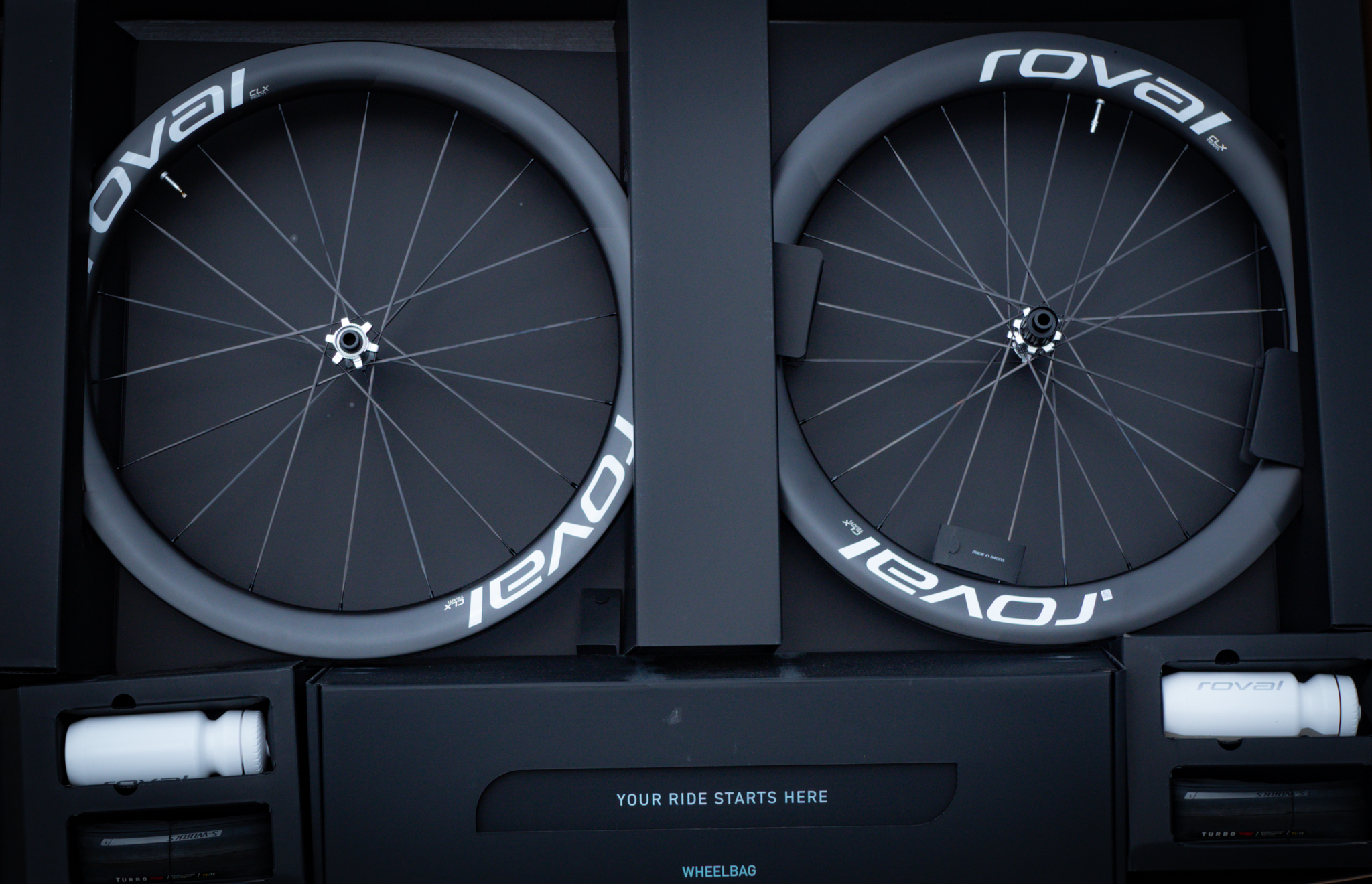
Inside, the two wheels are joined by a silver-stitched Roval wheel bag, a full set of replacement DT Swiss Sinc bearings, both Shimano HG and SRAM XDR freehub bodies, spare DT Aerolight II spokes and nipples, silver alloy centre-lock disc rotor lockrings, a S-Works branded Dynaplug Racer Pro tyre plug tool, spare tyre plugs, two Specialized Turbo RapidAir tyres, a pair of S-Works branded Purist water bottles, and even a build card for each wheel showing the spoke tensions, trueness and more.
Only 1,500 will be made, meaning when they're gone, Specialized will make no more. That's not me trying to create a sense of urgency though; I'm just stating facts. I could record an album and only produce one copy, but such exclusivity doesn't mean anyone would pay to hear me sing.
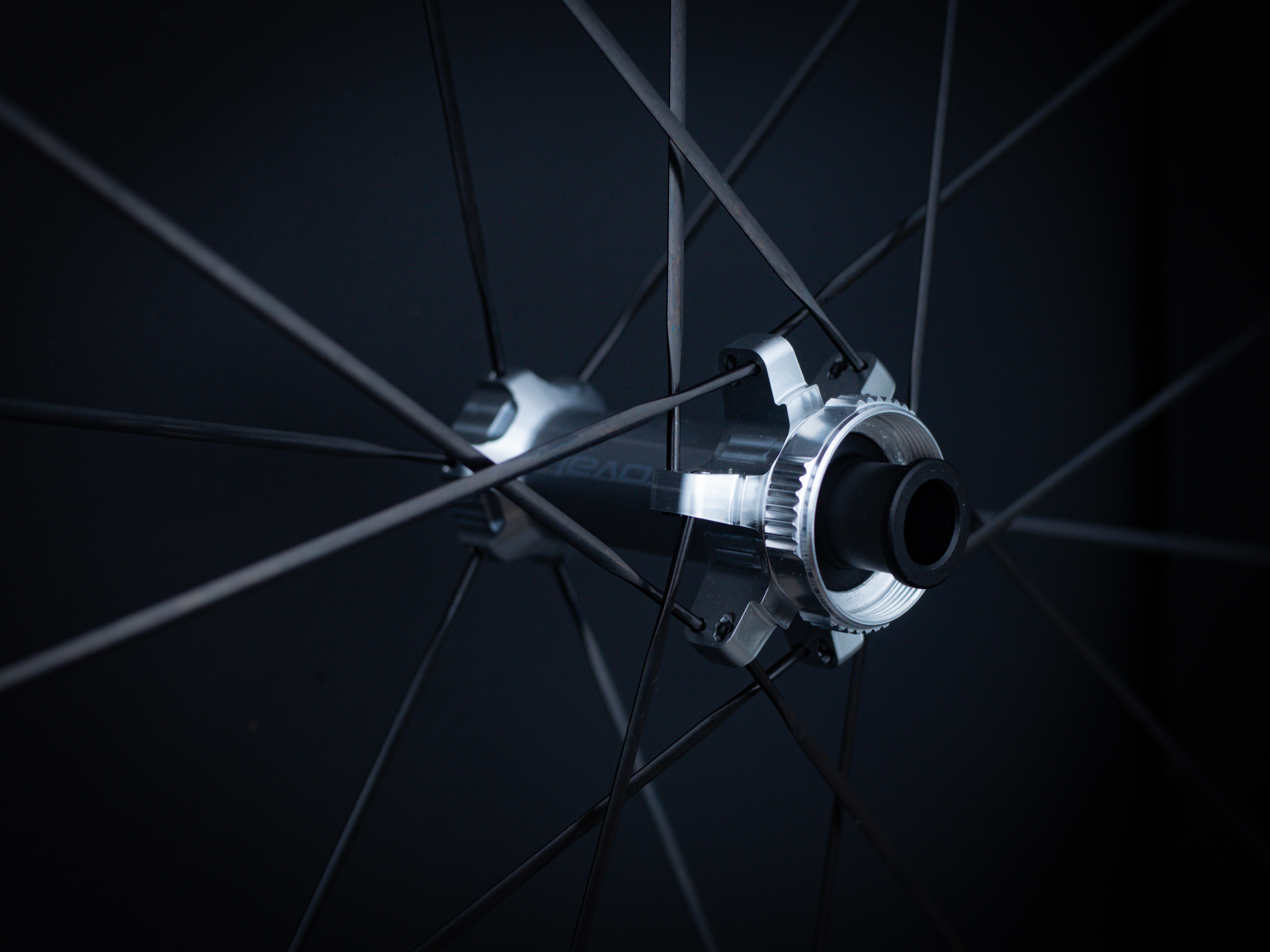
Design and specification
At first glance, the wheels are very similar to the Rapide CLX II, but the details hold some significant updates. The hub shells, designed and manufactured by Specialized itself, are based around the DT Swiss Ratchet EXP internals. Specialized says the low-flange hub design is 50 grams lighter across the pair, while also helping with wind-up stiffness to the benefit of acceleration and braking response. The avoidance of the black paint is worth two of those grams, and about 50 points in added style.
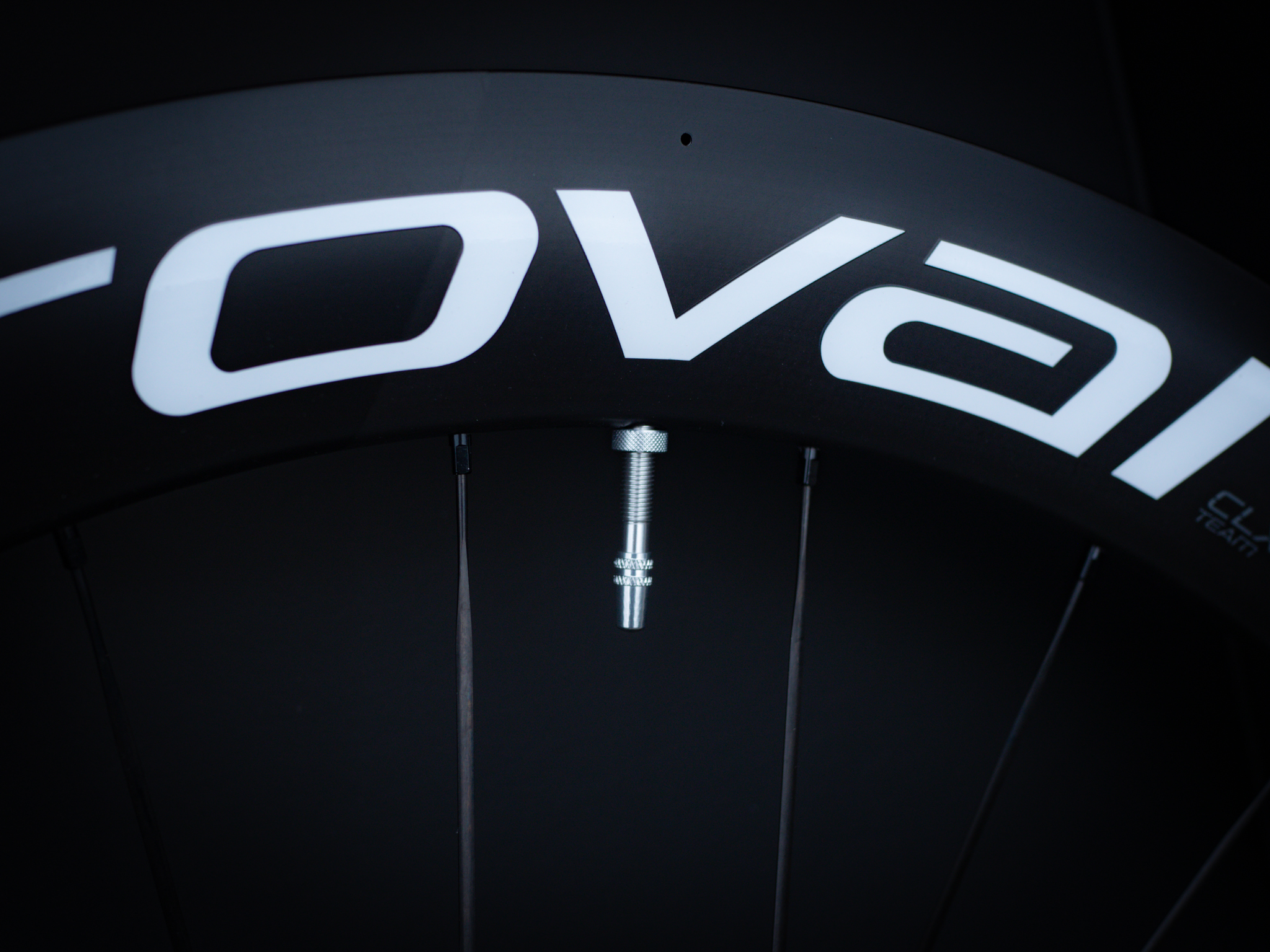
Stepping outwards to the rims for a second, and this is where you'd be forgiven for thinking nothing has changed. The profile is unchanged, with the front wheel measuring 51mm deep and 35mm wide, and the rear measuring 60mm deep and 30.7mm wide. Both still feature hooked beads, 21mm internal widths and were designed for 26mm tyres, although the brand says 28mm and 30mm tyres show very similar aero performance thanks to the wider front rim.
However, the carbon fibre has been refined using different resin and smaller overlaps between each layup. The process is said to be more time-consuming, but it results in a 40-gram weight saving per rim versus the CLX II.
In total, Specialized says the new wheels are 130 grams lighter than the CLX II in total, and having weighed the CLX II at 1,520g back in 2022 and the CLX II Team yesterday at 1,390g, I concur.
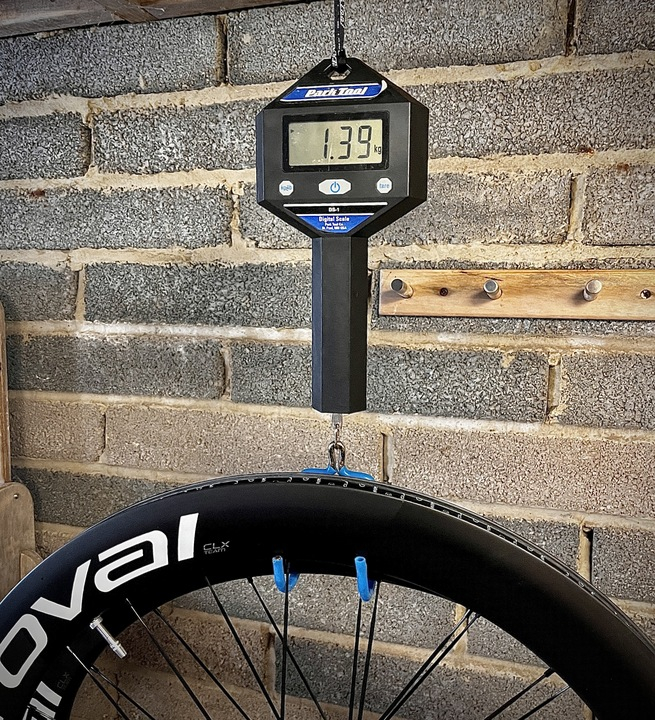
Connecting the hub and the rim is a set of DT Swiss Aerolite II spokes, which Specialized says were settled upon after a long process that involved seven other potential options. Interestingly, while Specialized found that carbon spokes would have brought the weight down further, the aerodynamic performance suffered by around 1.5 watts. Given the focus was on its pro racers, and the S-Works Tarmac SL8 can hit the UCI's mandated 6.8kg without too much trouble, the weight penalty was accepted for the additional aero benefit.
The wheels roll on DT Swiss SINC bearings; ceramic as you'd expect for a wheel of this price.

Included in the box is a full set of spare bearings alongside a hoard of replacement spokes and freehub bodies for both Shimano and SRAM. The value of the bearings alone is over £200, which goes a long way to offsetting the additional sale price.
Performance
As I see it, I need to review this wheelset in two ways. I can review the performance of the wheelset itself, which is better on paper than the CLX II. I then need to review the so-called 'experience' of owning a pair.
On the wheelset front, having ridden them for a little over a week now, I'd be lying if I told you I could feel the difference. It's about 12 months since I last rode the CLX II, and even if I were riding them back to back, 130 grams would be tough to notice, and half a watt of aero impossible.
They are fast, but indiscernibly close to similarly-premium competitors without the help of a wind tunnel. They accelerate quickly, and although they don't feel quite as sprightly as the Black Inc 28/32 which I had fitted to the Factor O2 VAM last year, there are other variables at play, such as the frame they were mounted to (I'm currently riding the heavier OSTRO VAM), tyre choice, and how fresh my legs are.
But as mentioned, my scales agree that the wheels are 130 grams lighter, and I have no reason to dispute the remaining claims.
Ignoring the CLX II for a second, the on-paper stats of the CLX II Team are pretty competitive, though not market-leading. For example, you can get the Cadex 50 Ultra for a little cheaper (£2,650), they're 40 grams lighter (according to my scales), and their aero performance will be close (based on the extremely marginal differences between our wind tunnel wheels testing). I don't know if it would be better or worse, but I'm doing my best to secure some more wind tunnel time!
Elsewhere, the Enve SES 6.7 are slightly deeper, and therefore presumably marginally more aero, but they're a bit heavier, and cost more at £3,300. Zipp's 454 NSW are around 40 grams heavier, more expensive (at retail) and again, the aero will be around the same.
It's hard to ignore the Hunt Sub50 here too, which at the significantly cheaper price of £2,289 (with ceramic bearings), are 10g lighter (claimed) but by Hunt's own admission, are marginally slower than the CLX II. It's impossible to ignore the Black Inc 48/58, which are also significantly cheaper at £2,329, with an assumed similar aerodynamic performance, and weigh a pretty impressive 1,290g.
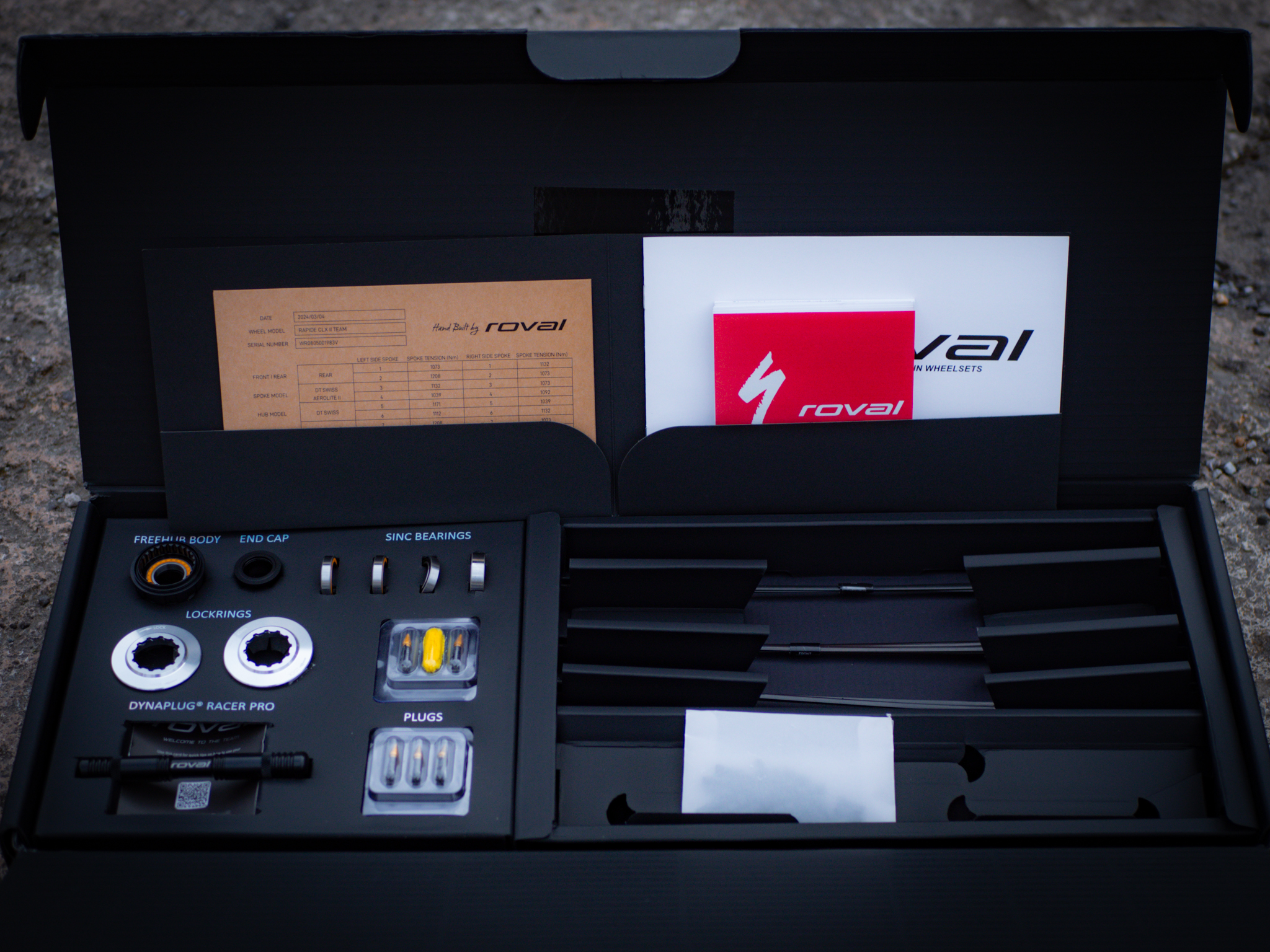
One thing all of those wheels omit, however, is the box full of spares that Roval offers. If you break a spoke on your Hunt wheels or need replacement bearings on your Enves, you'll have to wait until your local bike shop can source some spares, and then pay for them. With the Rapide CLX II Team, you can walk in with the spares in hand and have a fix right away (assuming the mechanic isn't busy, of course. Don't be that guy).
That extends to the initial setup, too, whereby you're ready to roll with freehubs for both SRAM and Shimano, along with tyres too. The enjoyable ownership experience continues to the wheel bag, which is a nice touch, as are the rotor lockrings, S-Works branded bottles, and Dynaplug tyre tool.

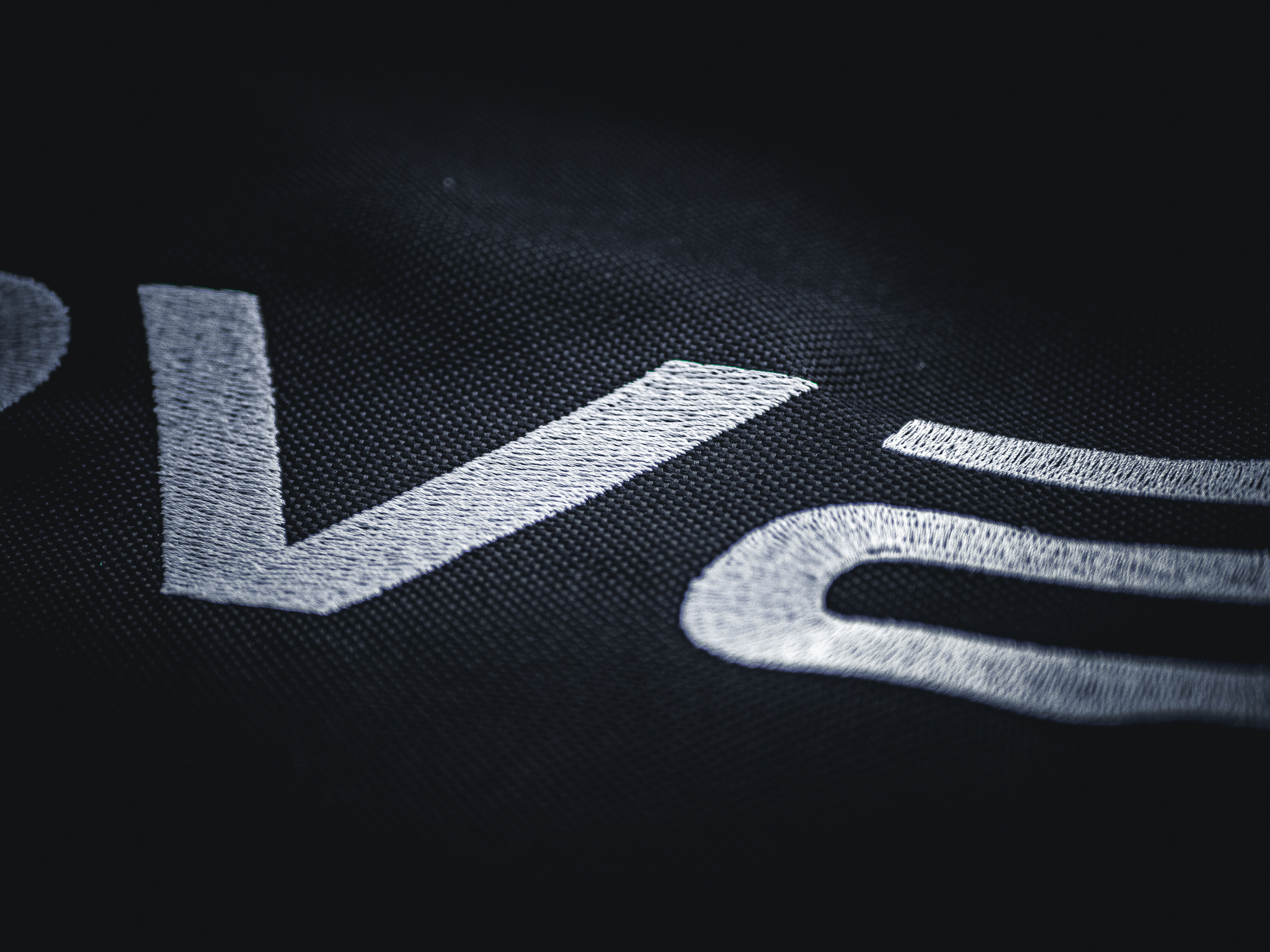
Value
To start with, let's look at the price difference between the CLX II and the CLX II Team. As I see it, you're paying for three things:
- A better product
- Extra 'stuff'
- Exclusivity
If you're in a position where the slightly improved product matters, then to put it frankly you're probably in a position where you don't actually have to pay for your wheels.
As I've outlined above, you can get lighter wheels for less. You can almost certainly get faster wheels for less too (based on acceptable assumptions coupled with our wind tunnel data), and you can quite possibly get faster, lighter wheels for less, though I don't have the aero data to back this up.
I think it's fair to say that if all-out performance is your sole metric, and half a watt (one second over 40km) is worth $3800 or £3000, you're a pro rider, my opinion doesn't matter to you because you're obligated to use them, and you've probably been riding these longer than I have. Hello Remco, I'm talking to you.
With that said, all the extra stuff goes a long way to offsetting the price hike, and to some people, that'll swing the decision.
In the UK, where the price difference is £500, the maths of what you get in the box stacks up pretty nicely. £200 of bearings, £50 of spokes, £130 of tyres, a spare freehub, bottles, and a premium padded wheel bag will total up fairly close to £500. Couple that with the improvement to the wheels and the value is probably worth the spend.
In Europe and the United States, where the difference is €1000 / $1000, the sums don't balance quite so favourably.
Do you need all the extra stuff? Of course not, but you might place enough value on having spares at hand that it's worth it to you.
Do you need spare batteries and lightbulbs in your kitchen drawer? No, but you've got some, haven't you? If £200 of spare ceramic bearings sit in your shed for the next four years untouched, you'll be pretty miffed at having bought them, but if the ones in your wheels choose to implode the night before your next big race, you'll be as smug as they come.
Of course, that's all before we get to the intangible reason to buy these wheels: exclusivity. I don't think they'll be so exclusive that their value will go up, rather than down, but being part of an exclusive club is something that excites a lot of people. I don't much care for it. I don't buy art, I don't buy NFTs, but people did and do.
The fact that in 2018, Burberry burned a reported $37 million of unsold stock to protect its exclusivity and avoid devaluing its image proves that the concept is alive, and they're far from the only ones to have done it. It's disgusting, and I hate it, and I've gone off on a tangent.
There will be only 1,500 of these wheelsets. Their silver hubs project grandeur to the world; a picture of luxury, and no doubt rich kids will buy them just to massage their ego via Instagram likes, but such is the world in which we live.
It irks me when brands launch special Tadej Pogačar saddles, Paris-Roubaix watches, or Tour de France sunglasses that are exactly the same as the others, but in a different colour, and think that's worth paying extra. Maybe I'm just a cynic.
At least in this case, the product is actually better, and Specialized has gone a fair way to adding value through useful accessories and spares.
Verdict
Those marginal improvements might not be noticeable when riding, but my Park Tool scales say they're lighter, and I trust that the rest of the differences aren't just made up. Even as a standalone wheelset, though, they are pretty competitive in their price point.
Whether these are worth the added spend over the CLX II is a similar question to asking whether an S-Works frame is worth the extra over a Specialized frame. The difference is there, if only marginal, and the cost is quite significantly higher, but the allure of being part of the figmental S-Works club is so strong that I see just as many S-Works bikes at my local races as the cheaper Specialized equivalents.
However, it doesn't end there. The unboxing was more of an enjoyable experience than you get with other wheels, and the sense of being part of an exclusive 'Team' will be attractive to some, but for me, the biggest benefit is in the box full of spares and accessories, and the simplicity that brings to the ongoing ownership.
Whether or not you think it's worth the extra cost will depend on how much value you place on each of the following three things: marginal gains, exclusivity, and the importance of readily available spares. Do they combine to make it a better proposition than the existing wheels? I'm afraid I can't answer that for you.







